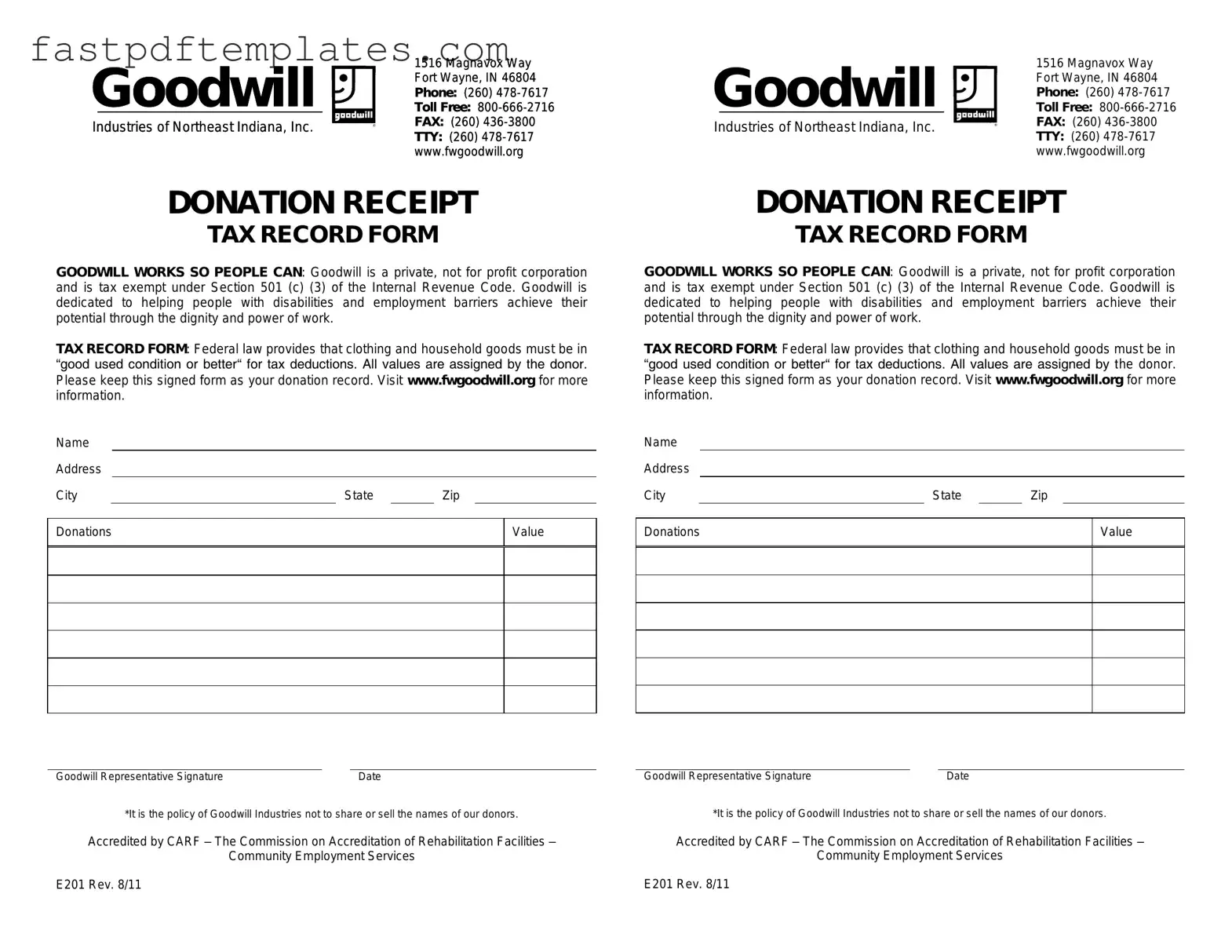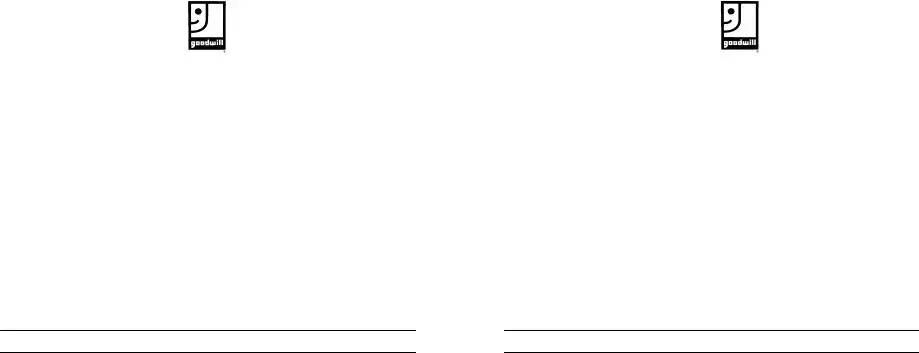The Goodwill donation receipt form serves as a crucial document for individuals who wish to claim tax deductions for their charitable contributions. Similar to this form, a charitable contribution receipt is issued by various nonprofit organizations when donors provide cash or goods. This receipt typically includes details about the donor, the date of the donation, and a description of the items given. Like the Goodwill form, it can be used to substantiate claims on tax returns, ensuring that donors receive proper acknowledgment for their generosity.
Another document that shares similarities with the Goodwill donation receipt is the IRS Form 8283, which is used for reporting noncash charitable contributions. This form requires detailed information about the donated items, including their fair market value. Just as the Goodwill receipt provides a record of the donation, Form 8283 serves as a more formalized declaration that can be submitted alongside your tax return, especially when the value of the donated items exceeds $500.
The donation acknowledgment letter is yet another document that aligns with the Goodwill donation receipt. Nonprofits often send these letters to donors, acknowledging their contributions and providing a summary of what was given. This letter usually includes the organization’s name, the date of the donation, and a statement confirming that no goods or services were exchanged for the contribution, similar to the assurance provided by the Goodwill receipt.
In addition, the cash donation receipt is akin to the Goodwill form, especially for individuals who donate monetary amounts rather than goods. This receipt typically includes the donor's name, the date of the donation, and the amount given. Just like the Goodwill receipt, it serves as proof for tax purposes, allowing donors to substantiate their charitable giving on their tax returns.
Another relevant document is the donor pledge form, which outlines a commitment to donate a specific amount over a set period. While this form may not provide immediate acknowledgment like the Goodwill receipt, it establishes a formal agreement between the donor and the nonprofit. This commitment can later be referenced when the donor makes payments, reinforcing the intention to support the organization.
The itemized deduction worksheet is also similar in purpose to the Goodwill donation receipt. This worksheet helps individuals track their charitable contributions throughout the year, including both cash and noncash donations. While it doesn’t serve as a receipt itself, it complements the Goodwill form by allowing donors to organize their contributions, ensuring they don’t miss out on potential tax deductions.
Furthermore, the donation invoice issued by some organizations can resemble the Goodwill receipt. This document details the items donated and the associated values, providing a clear record for both the donor and the organization. Like the Goodwill form, it can be used to claim deductions, although it is typically more formal and may involve a transaction for services rendered.
Lastly, a vehicle donation receipt is particularly relevant for those who donate cars or other vehicles to charitable organizations. This receipt documents the donation and often includes the vehicle’s identification number, a description, and the date of the donation. Similar to the Goodwill receipt, it serves as proof of the contribution and is necessary for claiming deductions, especially since the value of vehicles can vary widely based on their condition and market value.

